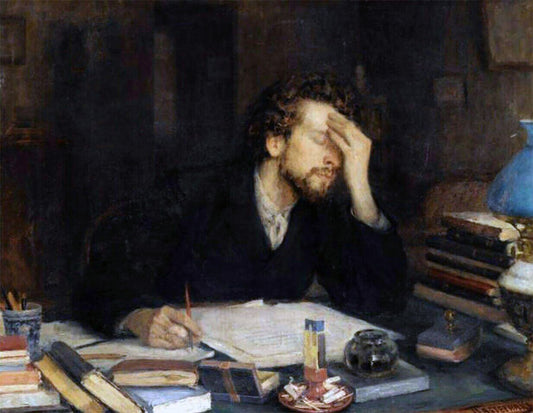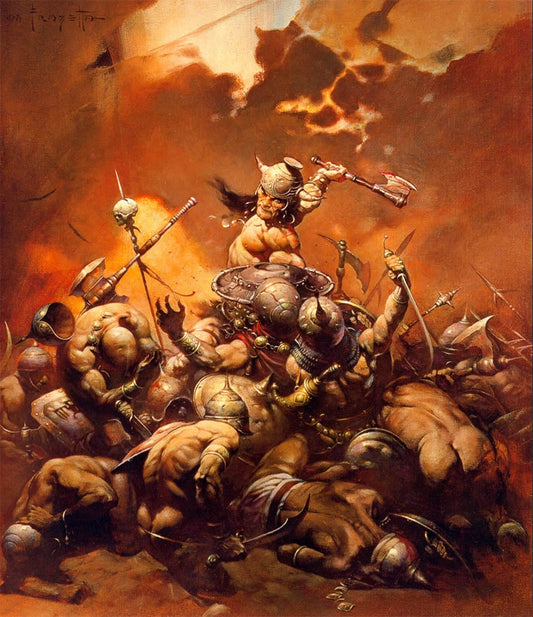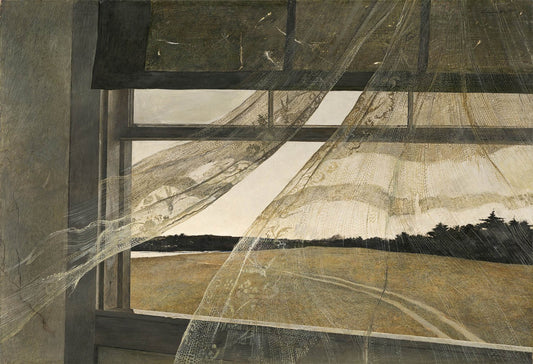No Rules, Just Tools: Exploring Art Mediums
Andreas ClaußenShare
The Versatility of Tools
What is a brick for? Building a house or a wall are often the first thoughts. But you have only one brick. What can it be used for? It could be a doorstop, paperweight, bookend, exercise weight, or weapon. It can be used as a hammer or a marker in a garden or field. You can use it to press down sandwiches or burgers. There are more possibilities, for sure, but what you see is that a thing that is supposed to be for something can be used for many other things too.
Beyond Brushes: Creative Art Mediums

Or think the other way around. What can I use to do this kind of task? A painting, for example, is not only done with brushes and paint. Some artists never use brushes to do their paintings. They use knives, rollers, sponges, spray cans, airbrushes, scrapers, squeegees, wood sticks, rags, credit cards, the other side of a brush, toothpicks, toothbrushes, feathers, pipettes, droppers, tree roots, leaves, their fingers, hair, buttocks, and breasts, and even what comes out of their bodies. They use computers or other people to paint their paintings.
So, Art mediums are the materials or tools used by an artist to create a work of art and execute ideas. It does not matter what a thing is for; it matters if you can use it for your purpose. No rules, just tools.
Mastery Over Mediums
The best tools in the world are like the best ideas – worthless with terrible execution. I hate when I see someone ask, “What brush do you use?” Promise me that you will not be one of them because you understand that tools are only as good as the user. Look at the drawings by Michelangelo, Adolph Menzel, or Alphonse Mucha, done with the cheapest and simplest materials available but worth preserving for hundreds of years because of their mastery of the craft.
“It makes no difference how skillful you are, as long as you have nothing to say; however, great technique will never become outdated, and even if you have nothing to say, it is always appreciated.”
– Nicolai Fechin (btw. he is another great draftsman. Look at his drawings too).
As I said, it is easier to get away with a boring idea executed well than the other way around. People admire craft. They like when things are made well, with care, by someone who makes it look so easy until you do it yourself and recognize the whole range of your missing knowledge and training. Craft should be the backbone of what you are doing (sorry, if this sounds like a rule).
The Journey of Abstract Art
I believe that the privilege of abstract painting isn't something that should be handed out like candy on Halloween. No, it's something you must earn.
Look at the so-called abstract artists today. Too often, they merely play with the medium without truly abstracting something from reality. They don't seek to uncover the essence of a real thing; instead, they manipulate the paint or other materials in a way that lacks depth or meaning because they made something abstract but did not abstract something.
The abstract painters of the past who left their mark in this part of the art world didn't just stumble into this way of painting; they earned their place in art history through years of dedication, study, and practice. They understood what came before them and often were masters of the skills previous movements provided. Then they sought out to find a new direction. Abstract painting isn't just a style; it's a journey, and it becomes much more enjoyable for the audience (and I believe for you too) when it starts with a strong technical foundation.
Next time you see someone slapping paint on a canvas and calling it abstract art, ask yourself: Have they truly earned the right to paint abstract, or are they just riding on the coattails of a movement they don't truly understand?
And if you want to create abstract art, that’s fine, I love it. But make it because you have the skills to do something else, not because you have no other choice.
Imagine craft as a too-heavy backpack that you prepared for your journey into the unknown realm of abstraction. As you venture further, you realize that you need to shed the unnecessary weight. With each step, you discard what you don't need anymore, until you're left with only the essentials. That's the essence of abstraction and a journey of every great artist: stripping away the excess to reveal the purest form of their expression.
Embrace Your Tools and Skills
So, learn the essential skill sets of your field (often established before you entered) and find or create tools that help you execute. Be open to updating your knowledge and learning new things all the time. Experiment, because you never really know until you have tested something. Make the most of what you have (because you never have enough) and play with the limitation of resources as constraints that can boost creativity.
Now you can walk anywhere you want.



